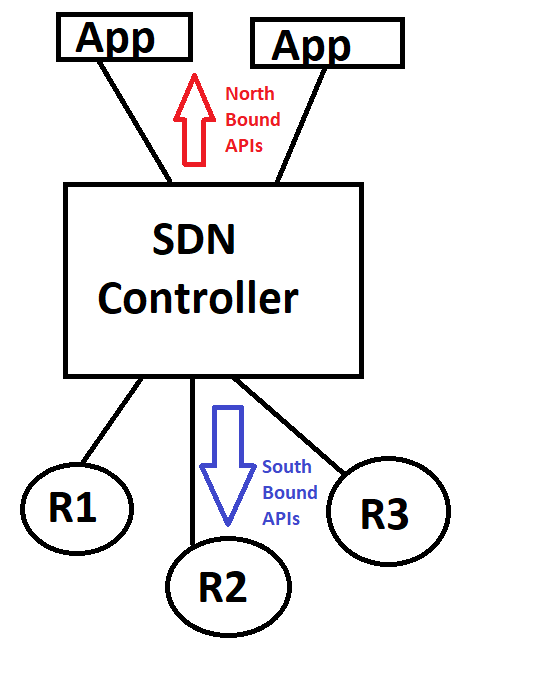Software-defined networking (SDN) is an innovative approach to network management that allows network administrators to control and manage network services through software applications rather than traditional hardware-based methods. SDN decouples the network’s control plane from its data plane, which means that network control functions are centralized and implemented as software applications, while the data plane, responsible for forwarding traffic, remains on network devices like switches and routers.
Key components and concepts of SDN include:
Controller

In the Software-Defined Networking (SDN) context, a controller refers to a crucial component of the SDN architecture. The SDN controller is the central brain or software application that is pivotal in managing and controlling the network.
Its primary functions include:
Centralized Network Control: The SDN controller provides a centralized point of control for the entire network. It acts as a single entity that governs the behavior of all network devices, such as switches and routers. This centralization of control is a departure from traditional networking, where each network device makes its own routing and forwarding decisions.
Communication with Network Devices: The controller communicates with network devices using southbound APIs (Application Programming Interfaces). These APIs allow the controller to send instructions to network devices to forward traffic. The most commonly used southbound protocol in SDN is OpenFlow, but others like NETCONF and P4 may also be used, depending on the network’s configuration.
Network Virtualization
Network virtualization is a technology that enables the creation of multiple virtualized network instances, often referred to as virtual networks or virtual LANs (VLANs), on a single physical network infrastructure. It allows network administrators to partition and isolate network resources, providing the appearance of multiple independent, logically segmented networks running on the same physical infrastructure.
Network virtualization has a wide range of applications and benefits, including:
Isolation: Virtual networks created through network virtualization are isolated from one another. This isolation enhances security by preventing traffic on one virtual network from interacting with or affecting traffic on another.
Resource Optimization: Network virtualization allows for efficient utilization of physical network resources. Instead of dedicating separate hardware for each network segment, resources can be shared dynamically among different virtual networks, making more efficient use of capacity.
Dynamic Configuration

Dynamic configuration, in the context of computer systems and networks, refers to the process of automatically and flexibly adjusting system settings, parameters, or configurations in response to changing conditions, requirements, or user preferences. The term “dynamic” indicates that these configurations can be modified in real-time or near-real-time, without requiring manual intervention. Dynamic configuration offers several advantages, including adaptability, improved efficiency, and responsiveness to changing circumstances.
Here are some key aspects and benefits of dynamic configuration:
Real-Time Adaptation: Dynamic configuration allows systems to adapt to changing conditions as they occur. This is particularly important in network management, where traffic patterns, security threats, and user demands can vary rapidly.
Efficient Resource Allocation: Systems with dynamic configuration can allocate resources (such as network bandwidth, CPU capacity, or memory) more efficiently by adjusting them based on the current workload. This helps ensure optimal performance without wasting resources.





Leave a Reply